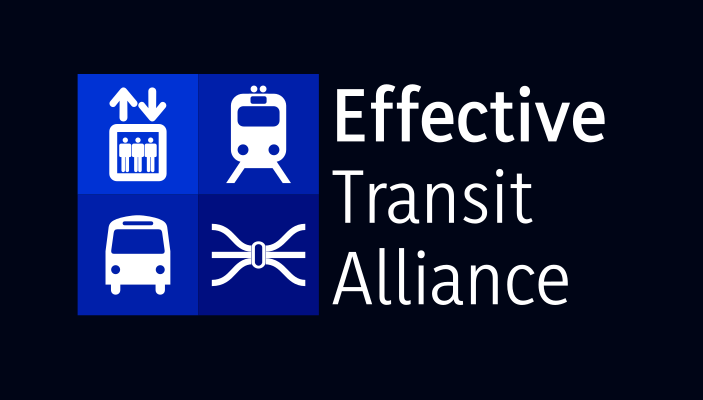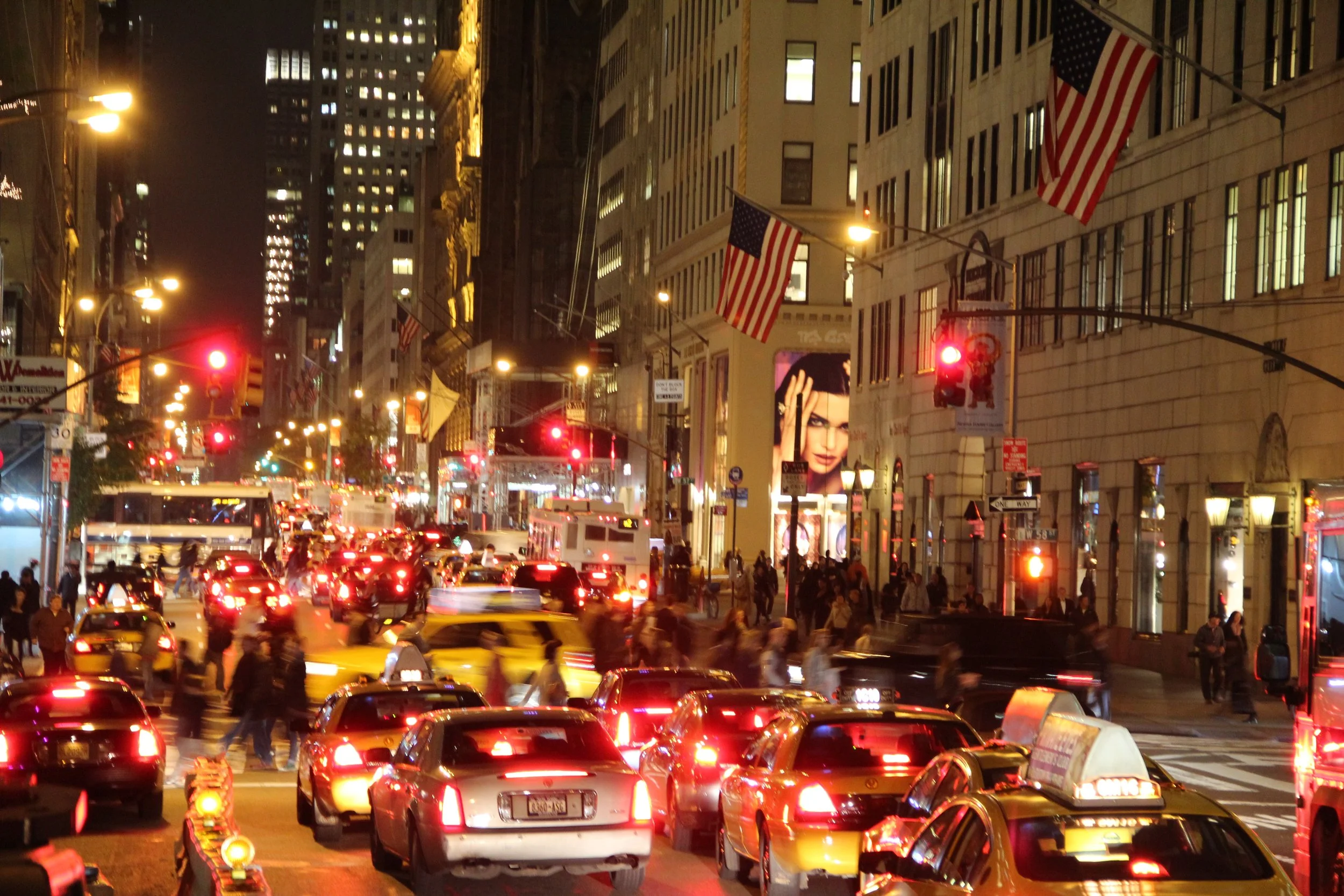Congestion Pricing Means a Better New York: It’s About More than Money
Gridlock in New York [1].
After years of political fighting, seemingly endless study, an ill-conceived, a potentially illegal “pause,” and multiple lawsuits, New York is finally ready to begin congestion pricing this Sunday, January 5th, 2025.
Congestion pricing will provide billions for improved transit, both immediately with improved service and in the long run by funding vital system upgrades and expansions. As the war of words surrounding the program escalated, however, many of congestion pricing’s benefits have not gotten the attention that they deserve. Although the revenue is important, congestion pricing will do so much more to make life better for all in greater New York, improving not only transit but also the city itself in many ways
Here are some of the improvements congestion pricing will bring:
Non-monetary Benefits to Transit
Faster Buses: Right now, buses in the Manhattan Congestion Relief Zone travel at an average of 6 mph. By reducing the number of cars in the relief zone, congestion pricing will allow buses to travel much faster, making them a far more useful and attractive option for getting around.
More Bus Service, for the Same Amount of Money: The less time it takes a bus driver to complete a route, the more trips they can complete over the course of their shift. The bus driver’s pay and benefits are 75% of bus operating costs; any speedup, such as from congestion pricing, will allow the MTA to offer riders more frequent bus service at no additional cost.
Improved Bus Reliability: Traffic is highly unpredictable, especially on the chaotic streets of Manhattan. Fewer cars means less clogged streets and less disruption to bus schedules. This means that congestion pricing will allow buses to show up when they are supposed to and stick to a more predictable schedule.
More Transit Riders: Better bus service and an added monetary incentive not to drive will lead to higher transit ridership. This means more fares and more revenue, which also makes it more cost effective to increase service.
Higher-Quality Paratransit Services: All of the benefits of congestion pricing for bus service also apply to paratransit riders. This means shorter waits and faster trips for those who rely on these vital services.
Congestion pricing will speed slow buses in Manhattan and provide better service [2].
Non-monetary Benefits to the City
Lower Pollution: New York faces high levels of pollution from the sheer number of vehicles that are driven up and down its streets every day. The reduction in traffic brought about by congestion pricing translates to:
Fewer emissions from vehicle exhaust, lowering New York’s carbon footprint and leaving less smog in the air.
A substantially lower amount of particulate matter from the tires and brakes of vehicles.
Reduced noise pollution, as cars are one of the loudest parts of the urban environment.
Health Improvements: The reduction in pollution that will be brought about by congestion pricing will be a boon to the general health and welfare of everyday New Yorkers. Lower smog levels in the air means lower rates of asthma, especially for children. After Stockholm implemented its congestion pricing system, childhood asthma reduced locally by 47%. Congestion pricing has also been shown to lead to increases in population cardiovascular health and life expectancy. Finally, less traffic could simply lead to less stress on a population level, both for drivers and pedestrians.
Improved Pedestrian Safety: Fewer cars in the relief zone will mean fewer collisions between cars and other cars, bikes, and pedestrians in what is perhaps the most pedestrian-dense region in the country. Indeed, after the implementation of its congestion pricing plan, London saw a 46% reduction in car crashes. By reducing gridlock, congestion pricing will also help keep crosswalks clear, so pedestrians will no longer have to weave around cars while crossing the street.
Faster Emergency Response Times: The response times of fire trucks, police cars, ambulances, and other emergency vehicles in Manhattan are already up anywhere from 11% to 121% over the last decade. Congestion pricing will reduce traffic, allowing these vital services to get where they need to go in a far more timely manner.
Faster Travel for those who Drive: For those who need or choose to drive for whatever reason, congestion pricing will reduce traffic, making travel faster, safer, and less stressful.
The Potential for Future Streetscape Improvements: While not part of the initial congestion pricing plan, reduced traffic will make future redesigns of Manhattan’s streets, sidewalks, and plazas far easier, making more room for all New Yorkers and increasing the quality of life for everyone who enters Manhattan.
Congestion pricing will lead to less traffic, less pollution, less asthma, safer streets, and a more liveable city [3].
Benefits of Money to MTA
Establishing a Stable Funding Source: After the recent US election, the future of federal transit funding is uncertain. Congestion pricing will ensure that the MTA has a new funding source that will remain stable no matter what the future may bring.
Improving Accessibility: A major chunk of the revenue raised by congestion pricing is already earmarked to go towards making NYC’s subway completely accessible via the construction of elevators and ramps. This will help not only those with physical disabilities or limited mobility, but everyone traveling through the system—such as, for instance, those traveling with luggage. Right now, the MTA plans to make the subway system 95% accessible by 2055, and with cost and construction reforms, that goal could be achieved even sooner.
Faster, More Reliable Trains: Congestion pricing revenue will also fund signaling upgrades to expand MTA’s modern communication-based train control (CBTC) in the subway system. CBTC will replace the system’s antiquated mechanical systems with electronic signals, meaning fewer delays, fewer breakdowns, and faster service. Riders on the 7 and L lines have benefitted from the improved service from CBTC.
Funding System Expansions: The money raised from congestion pricing will also be used to fund needed expansions like the Interborough Express (IBX), extending the Second Avenue Subway to Harlem, and other potential projects such as QueensLink.
A map of the congestion relief zone [4].
Evidence: A Review of the Literature
There is extensive evidence of the benefits of congestion pricing regardless of which projects the money funds, like the ones listed above. Below are a list of some of the findings from cities that have already introduced congestion pricing:
Gibson and Carnovale (2015) studied Milan, where an unexpected eight-week suspension of the program by judicial order made it easier to look at the short-term impacts: congestion pricing reduced traffic entering the congestion charge zone by 14.5% and pollution by 6–17%.
Börjesson (2018) studied Stockholm and Gothenburg and computed the elasticities of travel with respect to price. She finds among other things that traffic decreased even in the evenings, when roads are not priced, as people shifted to public transportation, and that the effect of modal shift increased over time in Stockholm (where there are ample public transit alternatives) but decreased in Gothenburg (where the alternatives are weaker).
Simeonova et al (2018) studied air pollution in Stockholm and found that congestion pricing reduced pollution by 5–15% and cut childhood asthma in half.
Leape (2006) studies the impact of the London congestion charge on traffic: within the first year, total vehicle-kilometers fell 12%, rising to 16% excluding bikes, motorcycles, and buses.
Green et al (2014) looked at car crashes in London and found a significant and substantial decline within the congestion zone, but also some evidence of decline outside the zone, at uncharged times, and for exempt vehicles.
Tonne et al (2008) found that the congestion charge in London saved people collectively 1,888 years of life expectancy.
Chamberlain et al (2023) did a meta-study of low emissions zones, including London and Milan congestion pricing but also other policies in Germany and Japan, and found consistent health outcome benefits, especially reduction in cardiovascular disease.
As all these studies show, while the exact value of the benefits varies, congestion pricing has a sizable positive impact on people’s health and saves both drivers and transit users time.
It’s time to turn on the cameras and start congestion pricing (Photo courtesy of Blair Lorenzo, ETA).
Conclusion
Of course, the MTA must be a good steward of the money it receives from congestion pricing, and ensuring that that organization operates effectively will be an ongoing process. Ultimately, however, the health of New York City is the health of its transit system, and it is in dire need of the upgrades that congestion pricing will fund.
That said, even if congestion pricing were to somehow do nothing to fund transit, the benefits of reduced traffic will do wonders for both New York City’s transit and its quality of life. For the first time in far too long, New York City will be a model for other U.S. cities, a shining example that this forward-thinking policy can improve daily life for all of those who live and work there.
We are now less than 48 hours away from turning on the cameras and starting congestion pricing. It’s time to tout the benefits and celebrate this huge win for the climate, for public health, and for mass transit, and use it as a springboard to keep pushing for more progress.
Acknowledgments
We wish to acknowledge the following ETA members who contributed to this statement:
Hunter Bickel
Tim Lazaroff
Alon Levy
Blair Lorenzo
Vinay Madhugiri
William Meehan
Samuel Santaella
Khyber Sen
Footnotes
Roy Googin, “Gridlock resulting from vehicles and pedestrians ‘blocking the box’ at the intersection of 1st Avenue and 57th Street in New York City” (November 19, 2007. CC BY-SA 3.0, https://commons.wikimedia.org/wiki/File:New_York_City_Gridlock.jpg).
Bryan Ledgard, “New York May 2015” (May 14, 2015. CC BY 2.0, https://commons.wikimedia.org/wiki/File:New_York_May_2015_(18077083399).jpg).
Niederkasseler, “red,” (October 26, 2011. CC BY-SA 3.0 https://commons.wikimedia.org/wiki/File:Red_by_Niederkasseler_-_panoramio.jpg).
MTA, (Accessed January 3rd, 2025, https://congestionreliefzone.mta.info/tolling)





